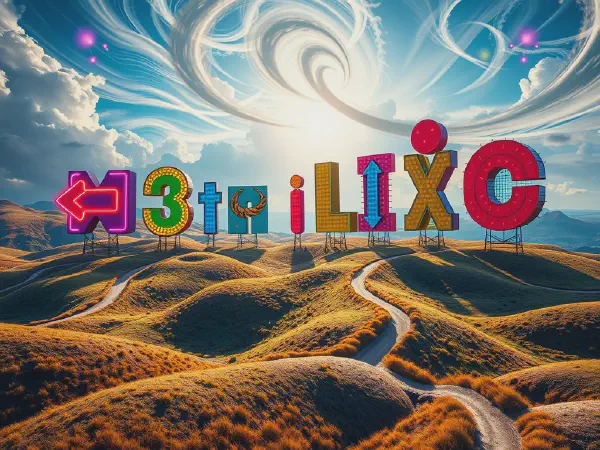Explore the World of Gigantic Signs: Creative Impact

The Impact and Design of Gigantic Signs
Gigantic signs have become an iconic aspect of modern advertising, playing a crucial role in capturing attention and conveying messages to a large audience. These oversized displays serve not only as visual landmarks but also as powerful marketing tools that can significantly influence consumer behavior. From billboards to monumental installations, gigantic signs dominate the urban landscape and have found their way into various environments, making them a staple of contemporary branding.
The strategic importance of gigantic signs lies in their visibility and ability to attract attention from a distance. Often positioned in high-traffic areas, these signs can enhance brand recognition and facilitate instantaneous communication with potential customers. The effective use of colors, shapes, and messages on these large platforms ensures that they resonate well with viewers, making them an integral part of marketing strategies for businesses across industries.
Designing gigantics signs requires a careful balance of aesthetic appeal and functional performance. The considerations involved in their design go beyond simple visuals; they include material selection, lighting options, and the integration of branding elements that echo the identity of the business. Understanding the target audience and the environment in which the sign will be placed can significantly impact the effectiveness and longevity of these engagements.
As the world becomes increasingly urbanized, the relevance of gigantic signs continues to grow. These signs not only contribute to the visual landscape of cities but also reflect cultural trends and technological advances in advertising. The correlation between gigantic signs and urban identity highlights their importance as both marketing tools and cultural artifacts that can enhance a city’s image and tourism appeal.
In conclusion, gigantic signs are more than just enormous displays; they are a fusion of art, technology, and marketing strategy. Leveraging their potential requires effective design, proactive location selection, and an understanding of audience dynamics. As industries continue to innovate, the future of gigantic signs promises exciting developments in both advertising and urban expression.
Designing Gigantic Signs
When designing gigantic signs, choosing the right materials is essential to ensure durability and visibility in various weather conditions. Materials such as high-density plastics, aluminum, and weather-resistant fabrics are commonly used to withstand environmental wear and tear. The ability to maintain legibility from a distance and at different times of day is crucial, necessitating careful selection of colors and finishes that enhance visibility.
Incorporating branding elements effectively into gigantic signs is another critical aspect of their design. Logos, color schemes, and taglines must be prominent and cohesive with the corporation's overall branding strategy. The use of typography plays a vital role as well, with the need for fonts that remain readable from far away while aligning with the brand's voice.
Balancing aesthetics with functionality is key in designing gigantic signs. While eye-catching designs attract attention, the sign must also convey essential information clearly and quickly. Designers often experiment with shapes and layouts to create dynamic visuals that maintain message clarity, thus ensuring that the sign fulfills its advertising purpose without compromising artistic value.
Scale considerations are vital in the design process of gigantic signs. Designers must evaluate the size relative to the surrounding environment and ensure that the sign’s proportions are appropriate for the intended location. A sign that is too small may not achieve the desired impact, while one that is excessively large may overwhelm the viewer rather than captivate them.
Lighting options for night visibility cannot be overlooked when designing gigantic signs. Utilizing LED technology, neon lights, or backlit materials can enhance visibility after dark, ensuring that a sign retains its legibility and appeal during nighttime hours. This extends the hours during which the sign can capture attention, substantially boosting its effectiveness as a marketing tool.
Locations for Gigantic Signs
The ideal environments for establishing gigantic signs include areas with high foot and vehicular traffic where visibility is maximized. Locations such as busy intersections, shopping districts, and near event venues can ensure that signs reach the widest audience possible, creating exposure to a diverse range of potential customers.
Placement strategies for gigantic signs differ greatly between urban and rural settings. Urban placements often emphasize visibility to a more significant number of people, while rural areas may focus on accessibility to drivers. Each location presents unique challenges and opportunities, necessitating a thoughtful approach to ensure that the sign resonates with its intended audience.
Regulations and permits for large signs vary widely by region, and it is essential for businesses to navigate these requirements diligently. Acquiring necessary permits ensures compliance with local zoning laws, which often dictate sign size, illumination, and placement. Failure to adhere to these regulations can lead to significant fines or the removal of the sign.
Integrating gigantic signs into architectural spaces can enhance their visual impact and cohesive look. Designers may collaborate with architects to create installations that merge with existing structures, providing an aesthetically pleasing yet functional sign. Utilizing the architecture to frame or enhance the sign can amplify its prominence and effect.
Case studies of successful installations reveal the potential of gigantic signs when executed brilliantly. Examples include the iconic Hollywood sign, which serves both as a landmark and an advertising tool, and major sports arenas that feature large-scale digital displays to engage fans and promote events. These instances underscore the multifaceted benefits of well-planned gigantic signage.
Gigantic Sign Technologies
The debate between digital and traditional giant signs continues to evolve as technology advances. Digital signs offer dynamic content changes and interactivity, engaging viewers in a way that static signs cannot. However, traditional signs retain a nostalgia factor and continuity that can be appealing to certain demographics.
Innovations in sign-making technology have led to incredible developments, including advanced printing techniques, smart materials that change colors based on temperature or light, and sustainable production methods. These innovations are shaping the future of gigantic signs, offering more creative possibilities and less environmental impact.
Illumination techniques for giant signs have also advanced, with new options providing brighter, energy-efficient lighting solutions. LED technology has revolutionized how signs are illuminated, offering longer lifespans and lower operational costs, making it easier for businesses to keep their signage visible day and night.
Sustainability in sign production is becoming increasingly important, with many businesses seeking eco-friendly materials and processes. This shift not only fulfills corporate social responsibility goals but also appeals to eco-conscious consumers, thus blending ethical considerations with marketing strategies in the gigantic signage industry.
Examples of interactive gigantic signs, such as augmented reality installations, represent a new frontier in signage technology. These innovative designs invite user engagement, often integrating social media and real-time updates that enhance the viewer's experience and encourage interaction with the brand in meaningful ways.
Marketing with Gigantic Signs
Creating memorable brand experiences is paramount when marketing with gigantic signs. When designed and executed well, these signs can foster emotional connections with the audience, making them more likely to remember the brand. Incorporating storytelling elements within the signage can further strengthen these engagements, allowing consumers to see the brand narrative come alive.
Target audience reach using giant signage is one of its primary advantages. By strategically placing signs in locations where target demographics frequent, businesses can effectively capture the attention of potential customers. A deep understanding of the audience's habits and preferences can enhance the sign's effectiveness, delivering messages to those most likely to engage with the brand.
The psychology behind large visual displays emphasizes their ability to create immediate interest and engagement. Studies have shown that larger signs are often perceived as more authoritative and credible, leading to higher viewer trust. This psychological association can significantly bolster brand perception and encourage consumer action.
Event promotions through gigantic signs can create a sense of excitement and anticipation. Utilizing bold designs that highlight specific events or products can drive foot traffic and enhance visibility, making these signs invaluable tools for marketing campaigns around special occasions, product launches, or community events.
Measuring ROI on giant sign campaigns involves tracking engagement metrics, foot traffic, and sales conversions attributed to signage visibility. Too often, businesses overlook this aspect of marketing evaluation, missing the chance to demonstrate the effectiveness of their investment in gigantic signage strategies.
Historical Significance of Gigantic Signs
Iconic gigantic signs throughout history have marked turning points in advertising and cultural identity. For instance, the infamous Times Square signs capture the vibrancy of New York City, while the neon lights of Las Vegas epitomize the excitement of entertainment. These signs have transcended their original purposes to become cultural ambassadors for their respective locations.
The evolution of signage and advertising trends can be traced through the history of gigantic signs. From painted billboards to the advent of neon lighting and digital displays, each era reflects societal changes and technological advancements, showcasing how signage adapts to meet current demands and consumer preferences.
The cultural impacts of giant signs also extend to their ability to shape city landscapes and identities. They often become landmarks that define the region, influencing tourism, local pride, and even economic circumstances. Monumental signs can serve as public art, stimulating discussions about aesthetics and capitalism in urban environments.
Certain gigantic signs achieve landmark status due to their historical significance or unique designs, such as the Hollywood Sign and the 'Welcome to Fabulous Las Vegas' sign. These have become symbols of their respective cities and are woven into the cultural fabric of American identity, representing dreams and aspirations.
Finally, documenting the history of sign-making reveals a rich narrative that intersects with art, commerce, and technology. Such histories illuminate the craftsmanship involved, from traditional artisans to modern digital creators, emphasizing how gigantic signs remain a dynamic component of visual culture.
